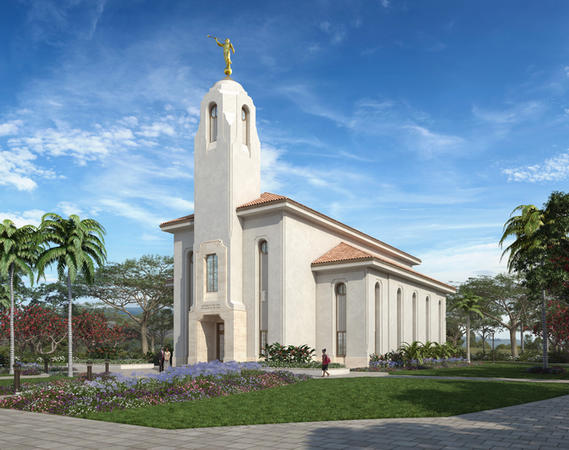Durban South Africa Temple
On 1 October 2011, during the opening session of the 181st Semiannual General Conference of The Church of Jesus Christ of Latter-day Saints, Thomas S. Monson, President of the Church, announced the construction of a temple in Durban, South Africa. The Durban South Africa Temple will be the second Mormon temple built in South Africa. The Johannesburg South Africa Temple which was dedicated in 1985, was the first Mormon temple built there.
The nation of South Africa has 12 stakes, 4 districts, and 1 operating temple in the city of Johannesburg, over 350 miles (570 kilometers) northwest of Durban. The city of Durban is famous for being the busiest port in South Africa. With a metropolitan population of almost 4.5 million people, it is the country's third largest city, behind Johannesburg and Cape Town.
The Mormon Church’s history in South Africa began in 1853, when missionaries first arrived there in April. By August of that year, the first congregation was organized just outside Cape Town. The growth of the Church was amazing. In just two years' time, one congregation became three, and South African Latter-day Saints in the area totaled almost 130. Government restrictions and challenges in speaking Afrikaans led to a period from 1865 to 1903 in which no Mormon missionaries were sent to South Africa. Just a few years after missionary work resumed there, the first Mormon church building was constructed in Mowbray.
The growth of the Church moved steadily onward. By October 1978, there were 7,200 church members in South Africa, Rhodesia (Zimbabwe) and South West Africa (Namibia), 3,450 of whom attended the area’s first conference. Fourteen years later, 4,200 church members attended a conference in Johannesburg, and four years after that, a regional conference celebrated the attendance of 5,000 church members. Today, South Africa is home to 55,000 Latter-day Saints of all races, worshiping in unity and working together to overcome some of South Africa’s cultural challenges.
